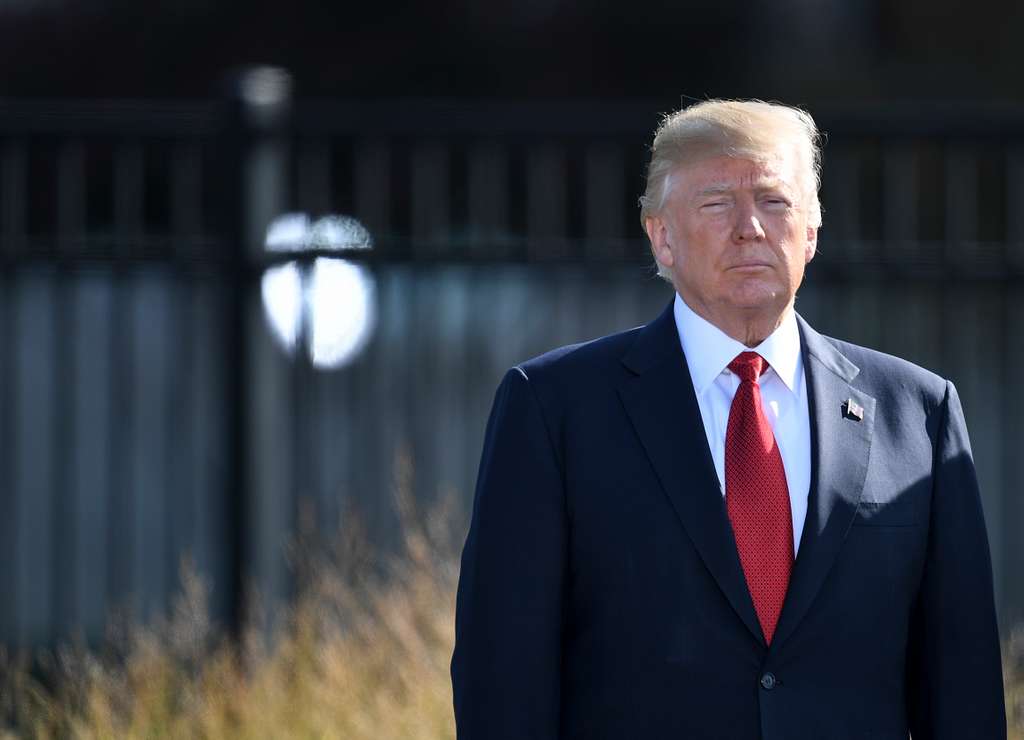
The Role of Drones in Protecting High-Profile Events: A Lesson from the Trump Rally Shooting
On July 13, a tragic incident unfolded at a rally in Butler, Pennsylvania, where a gunman, identified as 20-year-old Thomas Matthew Crooks, opened fire from a rooftop near where former President Donald Trump was speaking. This event resulted in the death of one rallygoer and serious injuries to two others before Crooks was shot dead by the Secret Service. Trump, the Republican presidential nominee, sustained an injury to his right ear but appeared at the Republican National Convention days later with a bandage over his wound.
In light of the shooting, numerous investigations have been launched to scrutinize the circumstances that allowed a shooter to get so close to the former president. Questions have been raised about potential missteps by the Secret Service, with increasing calls for the resignation of its director, Kimberly Cheatle.
Why Weren’t Drones Used as Part of the Security Operation?
One question that has come up repeatedly is why drones were not used as part of the security operation. A recent Newsweek article written by National Correspondent Kaleda Rahman cites Texas Senator Ted Cruz’ focus on the use of drones: Cheatle’s own ABC interview raises further questions. For the drone industry, it’s an obvious question – and points out the importance of enabling more first responders and security personnel to deploy UAVs quickly and easily.
Cruz reportedly questioned Cheatle about the absence of drones to detect potential threats from elevated positions during the rally. Cruz recounted the exchange on his podcast, Verdict, saying, “You had one senator who asked, ‘Were there drones, yes or no?’ And the answer from the head of the Secret Service was, ‘We determined that the risk from that rooftop was mitigated by countersnipers.'”
Cruz criticized Cheatle for failing to acknowledge the importance of deploying drones and questioned how the advance Secret Service team did not identify the rooftop’s sloped nature, which rendered countersnipers ineffective.
In a subsequent interview with ABC News, Cheatle described the shooting as “unacceptable” and emphasized that it “shouldn’t happen again.” She explained that snipers were not positioned on the rooftop due to its sloped nature, citing safety concerns. “That building in particular has a sloped roof, at its highest point,” Cheatle said. “And so, there’s a safety factor that would be considered there that we wouldn’t want to put somebody up on a sloped roof. And so, the decision was made to secure the building, from inside.”
Drones are “Standard Practice”
House Speaker Mike Johnson also addressed the issue, emphasizing the necessity of drones for such events. He stated in an interview, “It is standard practice now for drones to be in the air over an event like this.” Johnson has called for a task force to investigate the security failures and is compiling a list of critical questions that need immediate answers.
The Federal Aviation Administration (FAA) confirmed that the Secret Service did not request Special Government Interest (SGI) waivers to fly drones over the event. An FAA spokesperson told Newsweek, “The FAA did not issue any event SGI waivers prior to last Saturday in Butler, Pennsylvania.” SGIs are designed for first responders and security personnel: this represents a missed opportunity to utilize drone technology for enhanced security.
What About Counter Drone Technology?
While the Secret Service could easily have worked with the FAA to utilize drones for security, they didn’t – but shooter Thomas Matthew Crooks reportedly did use a commercial drone to check out the site prior to the attack. Effective counter drone technology might have been able to identify that aircraft as unauthorized, and could have led security personnel to try to locate the pilot before the shooting took place.
While drones should be standard practice for security operations, counter drone technology is currently limited in use. Regulations prohibit the use of counter drone technology except for certain DoD personnel during narrowly defined events. The rally, however, may have been just the type of National Security Event for which the regulations were designed.
President Joe Biden has ordered an independent review of the shooting, promising transparency with the American public. Additionally, the Department of Homeland Security’s inspector general has initiated an investigation into the Secret Service’s handling of the incident.
The Butler rally shooting highlights the evolving challenges of securing high-profile events in an era where technology such as drones can play a pivotal role. As the investigations proceed, it is crucial to understand and address these gaps to ensure the safety of public figures and attendees in the future.
Read more:
- Clarifying Cybersecurity Guidelines for Drones: the DETECT Act
- Remote ID in a Real World National Security Event: Pierce Aerospace at Super Bowl LVII
- Should Coachella be Using Drones and Digital Twins for Security? The New Standard in Event Management
Miriam McNabb is the Editor-in-Chief of DRONELIFE and CEO of JobForDrones, a professional drone services marketplace, and a fascinated observer of the emerging drone industry and the regulatory environment for drones. Miriam has penned over 3,000 articles focused on the commercial drone space and is an international speaker and recognized figure in the industry. Miriam has a degree from the University of Chicago and over 20 years of experience in high tech sales and marketing for new technologies.
For drone industry consulting or writing, Email Miriam.
TWITTER:@spaldingbarker
Subscribe to DroneLife here.